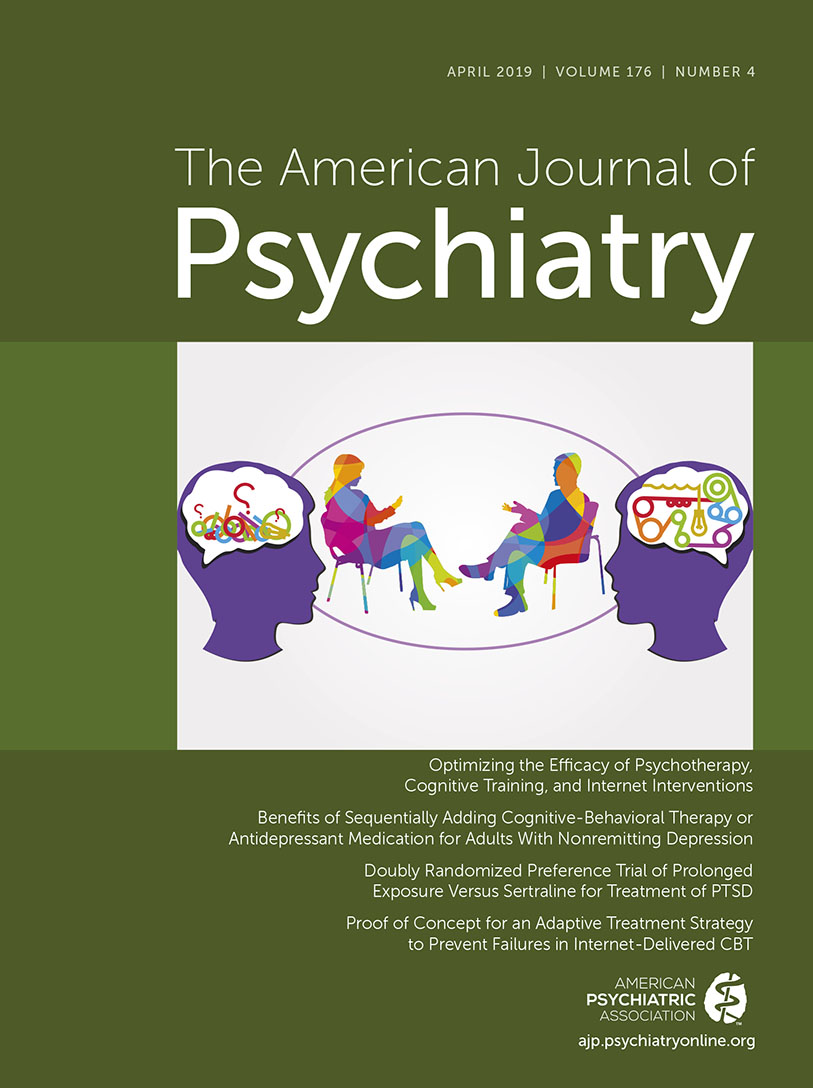Doubly Randomized Preference Trial of Prolonged Exposure Versus Sertraline for Treatment of PTSD
Abstract
Objective:
The authors examined the effect of patient treatment preference on the differential effectiveness of prolonged exposure and sertraline for the treatment of posttraumatic stress disorder (PTSD).
Method:
In a doubly randomized preference trial, 200 patients with PTSD viewed standardized treatment rationales prior to randomization. Patients were first randomized to choice of treatment or no choice. Those assigned to no choice were then randomized to prolonged exposure or sertraline. Acute treatment was 10 weeks, with 24-month follow-up. Interviewer-rated PTSD symptom severity was the main outcome measure, and depression, anxiety, and functioning were assessed as additional outcomes.
Results:
Patients preferred prolonged exposure over sertraline (number needed to benefit [NNTB]=4.5). Using intent-to-treat analyses (N=200), both prolonged exposure and sertraline showed large gains that were maintained over 24 months. Although no differential effect was observed on interviewer-rated PTSD severity, there was a significant benefit of prolonged exposure over sertraline on interview-rated loss of PTSD diagnosis (NNTB=7.0), responder status (NNTB=5.7), and self-reported PTSD, depression, and anxiety symptoms and functioning (effect sizes, 0.35–0.44). Patients who received their preferred treatment were more likely to be adherent, lose their PTSD diagnosis (NNTB=3.4), achieve responder status (NNTB=3.4), and have lower self-reported PTSD, depression, and anxiety symptoms (effect sizes, 0.40–0.72).
Conclusions:
Prolonged exposure and sertraline confer significant benefits for PTSD, with some evidence of an advantage for prolonged exposure. Giving patients with PTSD their preferred treatment also confers important benefits, including enhancing adherence.



